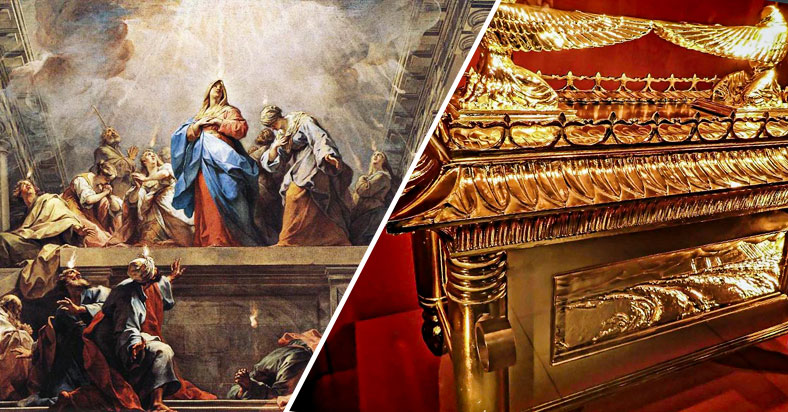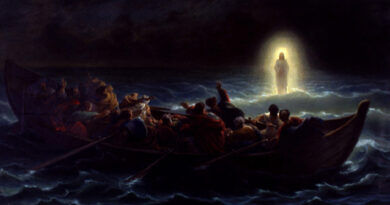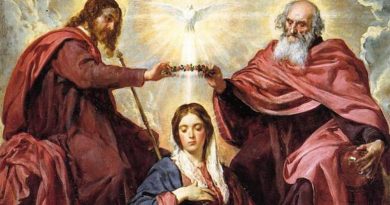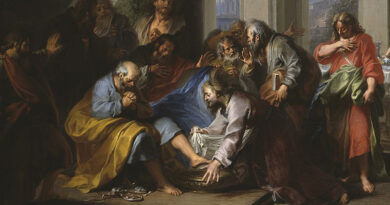Biblical Parallels: Solomon’s Temple Dedication and the Day of Pentecost
The Bible, often uses events and characters in the Old Testament as foreshadowings of those in the New Testament. One of the most striking examples of this can be seen in the parallelism between the Dedication of Solomon’s Temple in the Old Testament and the Day of Pentecost in the New Testament. This article will explore the profound connections between these two significant events and the symbolism behind the Ark of the Covenant and the Church.
The Dedication of Solomon’s Temple
In the Old Testament, the dedication of Solomon’s Temple stands as a monumental event in the history of Israel. The key elements of this dedication include:
- The Presence of 120 Priests (2 Chronicles 5:11-12): On the day of the Temple’s dedication, there were 120 priests present. This number, although seemingly arbitrary, holds significant symbolic meaning, representing a divinely appointed assembly.
- The Arrival of the Ark of the Covenant (2 Chronicles 5:7): The Ark, which held the tablets of the Law, was brought into the Holy of Holies within the Temple. The Ark was the most sacred object in Israel, signifying God’s covenant and His presence among His people.
- Fire from Heaven (2 Chronicles 7:1): As Solomon finished praying, fire came down from heaven and consumed the burnt offering and sacrifices, symbolizing God’s acceptance and presence.
The Day of Pentecost
Fast forward to the New Testament, and we encounter the Day of Pentecost, a pivotal moment in the early Christian Church:
- A Company of 120 Disciples (Acts 1:15): Echoing the 120 priests at Solomon’s Temple, there were 120 disciples gathered in the Upper Room. This gathering marks the nascent community of believers, a new spiritual assembly.
- The Mother of Christ, the New Ark of the Covenant (Acts 1:14): Mary, the Mother of Christ, was present among the disciples. In Christian theology, Mary is often regarded as the new Ark of the Covenant, as she bore within her the Word of God made flesh, Jesus Christ.
- The Descent of the Holy Spirit as Tongues of Fire (Acts 2:3): On Pentecost, the Holy Spirit descended upon the disciples in the form of tongues of fire. This event signifies the empowerment of the believers and the beginning of the Church’s mission to spread the Gospel.
Parallelism and Symbolism
The parallelism between these two events is profound and rich with theological symbolism:
- The Assembly of 120: Both events feature a divinely appointed group of 120 individuals. This number symbolizes a complete and perfect assembly prepared to witness a new phase of God’s plan.
- The Ark of the Covenant: In Solomon’s Temple, the Ark of the Covenant represented God’s old covenant with Israel. In the Upper Room, Mary, the new Ark, represents the fulfillment of God’s promise through the new covenant in Christ.
- Fire from Heaven: The fire that consumed the offerings in Solomon’s Temple parallels the tongues of fire at Pentecost. Both signify divine acceptance and presence—first in the physical Temple and then in the spiritual Temple, the Church.
The Church as the New Temple
Just as King Solomon built the physical temple, Jesus Christ built the spiritual temple—the Church. This new temple is not confined to a single location but is present wherever believers gather. The Church, empowered by the Holy Spirit, carries forward the mission of Christ, just as the Temple in Jerusalem was the center of worship and sacrifice.
The events of the Dedication of Solomon’s Temple and the Day of Pentecost are intricately linked, highlighting the continuity of God’s plan from the Old Testament to the New Testament. The presence of 120 individuals, the Ark of the Covenant, and the descent of fire all point to the fulfillment of God’s promises and the establishment of a new covenant through Jesus Christ. The Church, as the new temple, stands as a testament to this divine plan, continuing the mission that began on the Day of Pentecost.




